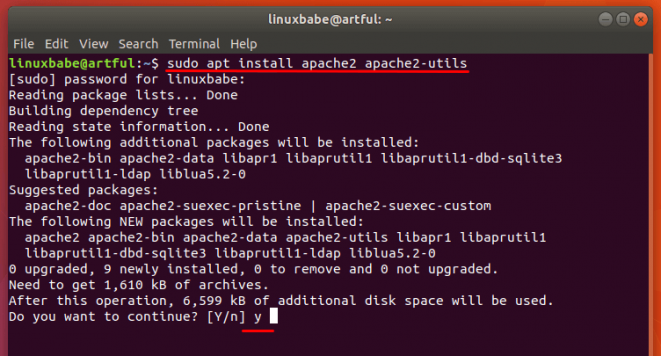

- #INSTALL UBUNTU 17 PHP7 PDFINFO INSTALL#
- #INSTALL UBUNTU 17 PHP7 PDFINFO UPDATE#
- #INSTALL UBUNTU 17 PHP7 PDFINFO PASSWORD#
If you don't want to enable this component, just press any key to skip the password validation part and continue the rest of the steps.Įnter y if you want to setup VALIDATE PASSWORD component: Securing the MySQL server deployment.Ĭonnecting to MySQL using a blank password. However, you must use a strong and unique password for database credentials. If enabled, It will automatically check the strength of the password and enforces the users to set only those passwords which are secure enough. This component allows the users to configure strong password for database credentials. You will be asked whether you'd like to setup "VALIDATE PASSWORD" component or not. You need to secure your MySQL server by running the following script: $ sudo mysql_secure_installation It is not recommended to use empty password for database administrative account. Setup database administrative user (root) password for Mysqlīy default, MySQL root user password is blank. May 29 07:15:22 ubuntuserver systemd: Started MySQL Community Server.Īs you see in the above output, MySQL is running! 2.1. May 29 07:15:16 ubuntuserver systemd: Starting MySQL Community Server. Loaded: loaded (/lib/systemd/system/rvice enabled vendor preset: enabled)Īctive: active (running) since Fri 07:15:22 UTC 2min 8s ago Verify if MySQL service is running or not using command: $ sudo systemctl status mysql

#INSTALL UBUNTU 17 PHP7 PDFINFO INSTALL#
To install MySQL On Ubuntu, run: $ sudo apt install mysql-server Now, open your web browser and access Apache test page by navigating to or If you see the "Apache 2 Ubuntu default page" as shown below, you are good to go.

If you don't want to allow https traffic, but only http (80) traffic, run: $ sudo ufw app info "Apache" 1.2. You will see an output like below: Rules updated Now, run the following command to allow incoming HTTP and HTTPS traffic for this profile: $ sudo ufw allow in "Apache Full" Let us look into the “Apache Full” profile using command: $ sudo ufw app info "Apache Full"ĭescription: Apache v2 is the next generation of the omnipresent Apache webĪs you see, "Apache Full" profile has included the rules to enable traffic to the ports 80 and 443. You can list out information about each profile and its included rules using ufw app info "Profile Name" command. You must allow the http and https ports by following the steps given below.įirst, list out the application profiles available on your Ubuntu system using command: $ sudo ufw app listĪs you can see, Apache and OpenSSH applications have installed UFW profiles. UFW is available by default in all Ubuntu versions.īy default, the Apache web browser can’t be accessed from remote systems if you have enabled the UFW firewall in Ubuntu 20.04 LTS. UFW, stands for Uncomplicated Fire wall, is a program for managing a netfilter firewall designed to be easy to use. May 29 07:02:26 ubuntuserver systemd: Started The Apache HTTP Server.Ĭongratulations! Apache service is up and running!! 1.1. May 29 07:02:26 ubuntuserver apachectl: AH00558: apache2: Could not reliably det> May 29 07:02:26 ubuntuserver systemd: Starting The Apache HTTP Server. Loaded: loaded (/lib/systemd/system/rvice enabled vendor preset: enabl>Īctive: active (running) since Fri 07:02:26 UTC 25s ago Next, install Apache web server: $ sudo apt install apache2Ĭheck if Apache web server is running or not with command: $ sudo systemctl status apache2
#INSTALL UBUNTU 17 PHP7 PDFINFO UPDATE#
Install Apache web server In Ubuntuįirst of all, update Ubuntu server using commands: $ sudo apt update $ sudo apt upgrade Operating System : Ubuntu 20.04 LTS Server Editionįirst, let us install Apache server.


 0 kommentar(er)
0 kommentar(er)
